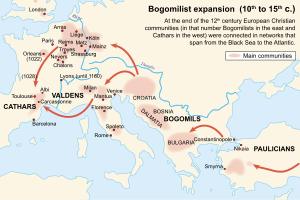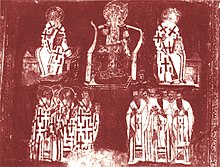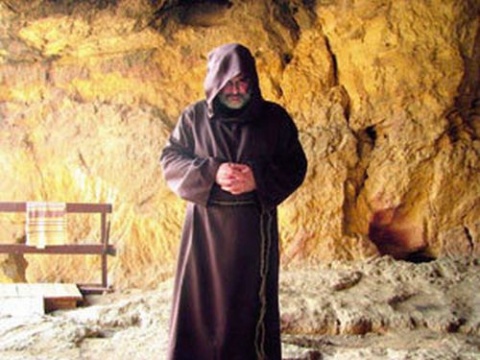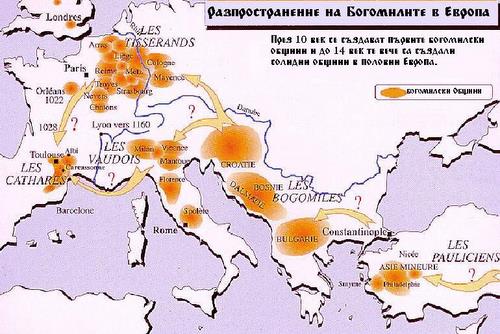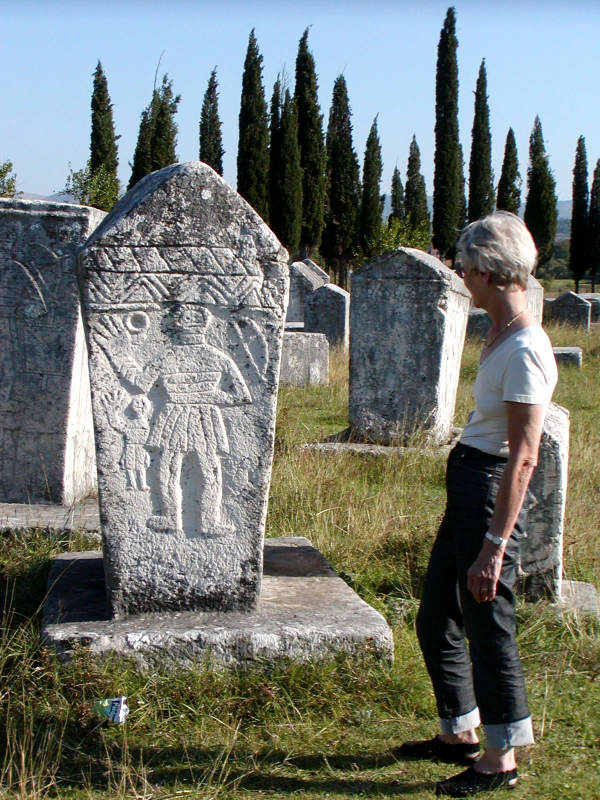Bogomilism
The Bogomils ( other spelling: Bogumiles ) were a heretical movement that proclaimed a religious dualism. The name of the movement may be traced back to a legendary Bulgarian village priest named Bogomil or Bogumil ( from the Bulgarian: Богомил Gottlieb, бог / bog = god мил / mil = love ) and the conventional at that time Slavic consecration formula Bog milui ( dt. God have mercy ). The movement of the Bogomils spread from the 10th to the 15th century by Bulgaria, the Byzantine Empire, in the other Balkan countries and in Russia. Of importance for the history of the Western Church was the fact that in the 12th century crusaders and merchants, came with the Bogomils, who had settled in Bulgaria in contact and their ideas brought to the West, which led to the emergence of the Cathar movement. Important personality may have been the Bogomils " Pope " Nicetas, who took part in the Cathar Synod in 1167 in Saint -Félix -de- Caraman. Alleged direct connections to the medieval Bosnian Church are challenged by the recent historical research.
The doctrinal content indicates about the personal interest of the priest Bogomil addition to the origin of the older dualism of the Manichaeans and Paulicians. In addition, ideological myths of the Bulgarian- Slavic folk beliefs and content of apocryphal texts can be found.
The Bogomilism developed since the 11th century into radical and moderate directions. The dualistic basic position led to the demonization of the material world, to the rejection of parts of the Old Testament as well as the veneration of icons, the usual worship of most sacraments and religious symbols, and the hierarchy in the Church. This brought the Bogomils in conflict with the major churches and also with the state and society.

